Choosing the right teddy bear fur fabric is one of the most exciting and important steps in creating a handmade bear. The type of fabric you use — mohair, alpaca, plush, or synthetic fur — completely changes the look, feel, and personality of your creation. With so many beautiful materials available, it can be tricky to decide which teddy bear fabric will suit your project best.
In this guide, we’ll explore and compare the most popular teddy bear materials and soft toy fabrics, from luxurious mohair and silky viscose to warm wool, cashmere, and cotton. If you’re sewing your first teddy bear or building a collection of stuffed toys, you’ll find tips, pros and cons, and expert advice to help you choose the perfect fur for your next creation.
Understanding Teddy Bear Fur Texture and Pile
Texture and pile are the foundational elements of teddy bear fur fabric, intricately weaving together to define the fabric’s character and tactile appeal. Texture refers to the surface quality of the fabric, encompassing its smoothness, softness, and overall feel.
Pile, on the other hand, refers to the length and density of the fibers that make up the fabric, dictating its plushness and fluffiness.
When selecting teddy bear fur fabric, it’s essential to consider both texture and pile to achieve the desired aesthetic and tactile experience. Different fabrics offer varying textures, from velvety smooth to coarsely textured, while pile height can range from short and dense to long and luxurious.
If you’d like to give your bear even more character, you can learn simple techniques to embroider a teddy bear nose that perfectly matches the texture of your chosen fur. It’s a small detail that makes a big difference in how your teddy bear comes to life.
Types of Teddy Bear Fur Fabric, and Soft Toy Materials
Each teddy bear material has its own charm — from soft plush and natural mohair to luxury silk and durable viscose.
Teddy bear fur fabric comes in a variety of materials, each offering its unique characteristics and advantages. Understanding the different types of fur fabric available is essential for selecting the right material for your teddy bear project. Let’s explore some of the most common types of teddy bear fur fabric:
Faux Fur
Faux fur is a synthetic material designed to mimic the appearance and texture of real animal fur. It is a popular choice among teddy bear makers for several reasons. Firstly, faux fur is generally more affordable than natural fur, making it accessible to a wider range of crafters.
Additionally, faux fur is available in a wide range of colors, patterns, and textures, allowing for endless creative possibilities.
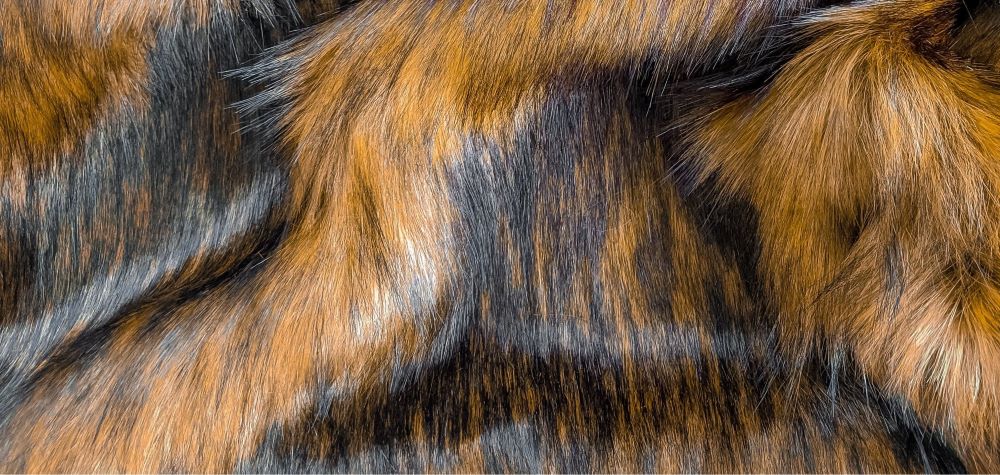
Whether you’re looking for a classic teddy bear with traditional brown fur or a whimsical bear with colorful, patterned fur, you can find faux fur to suit your vision. Another advantage of faux fur is its durability and ease of care.
Synthetic fur can create stunning results — check out this West Highland White Terrier made with a soft faux fur.
Mohair
Mohair is a luxurious natural fiber obtained from the fleece of the Angora goat. It is known for its softness, luster, and durability, making it a popular choice for teddy bear fur fabric.
Mohair has a distinctive curly texture and comes in a variety of colors and pile lengths, allowing for customization to suit different bear designs.
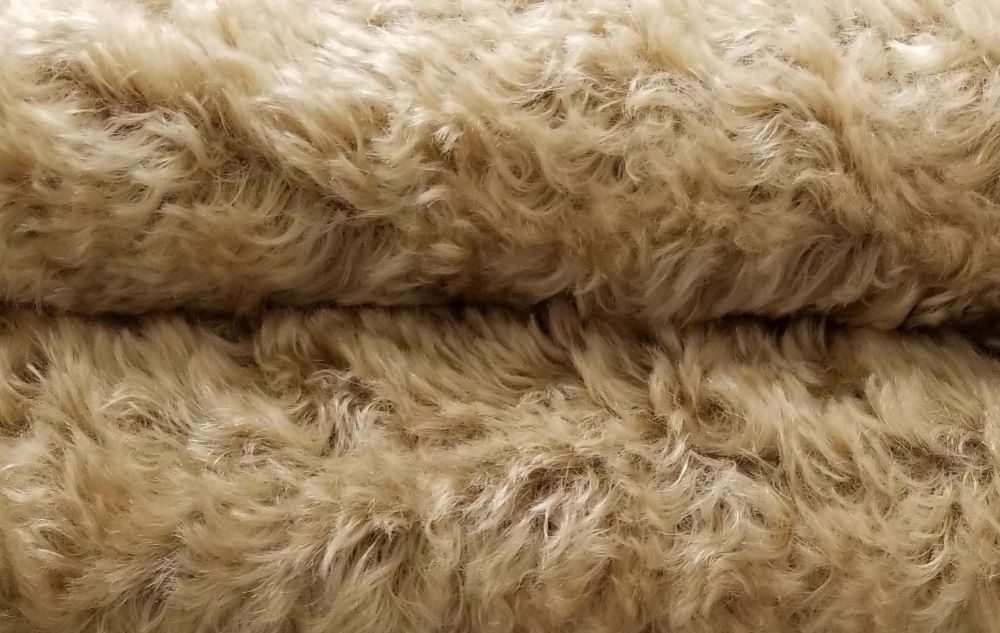
One of the key advantages of mohair is its natural sheen, which gives teddy bears a rich, luxurious appearance. Mohair is also incredibly soft to the touch, making it ideal for teddy bears intended for cuddling.
However, it’s essential to note that mohair can be more expensive than other fur fabrics, which may impact the cost of your teddy bear project.
Mohair is one of the most classic and luxurious fabrics for teddy bears. This cute sloth and this red short-pile bear show just how versatile it can be.
Alpaca
Alpaca fur fabric is prized for its exceptional softness and hypoallergenic properties. Sourced from the fleece of the alpaca animal, this fabric is incredibly soft and lightweight, making it perfect for creating cuddly teddy bears with a gentle touch.
Alpaca fur comes in a variety of natural colors, ranging from white and beige to brown and black, allowing for a range of design possibilities.
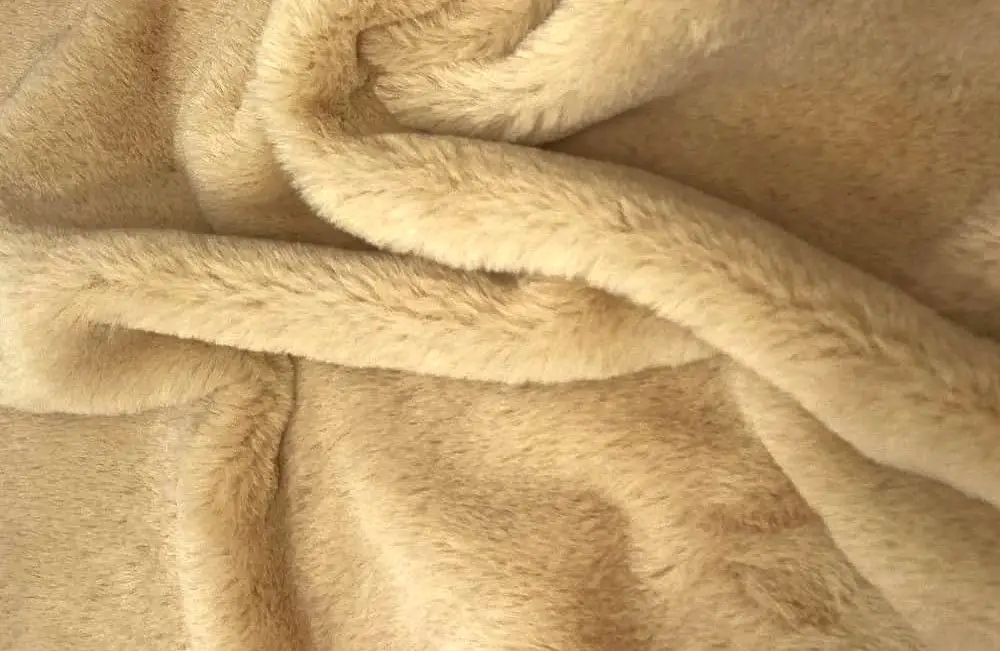
One of the advantages of alpaca fur is its hypoallergenic properties, making it suitable for individuals with sensitive skin or allergies. Additionally, alpaca fur is known for its durability, ensuring that teddy bears made from this material will stand the test of time.
Synthetic Plush
Synthetic plush fabrics, such as polyester or acrylic blends, offer durability and resilience ideal for teddy bear companions meant for everyday play. These fabrics come in an array of textures and colors, providing endless possibilities for creative expression.
Synthetic plush is often chosen for its affordability and easy maintenance. Unlike natural fur, synthetic plush is typically machine washable, making it easy to clean and care for.
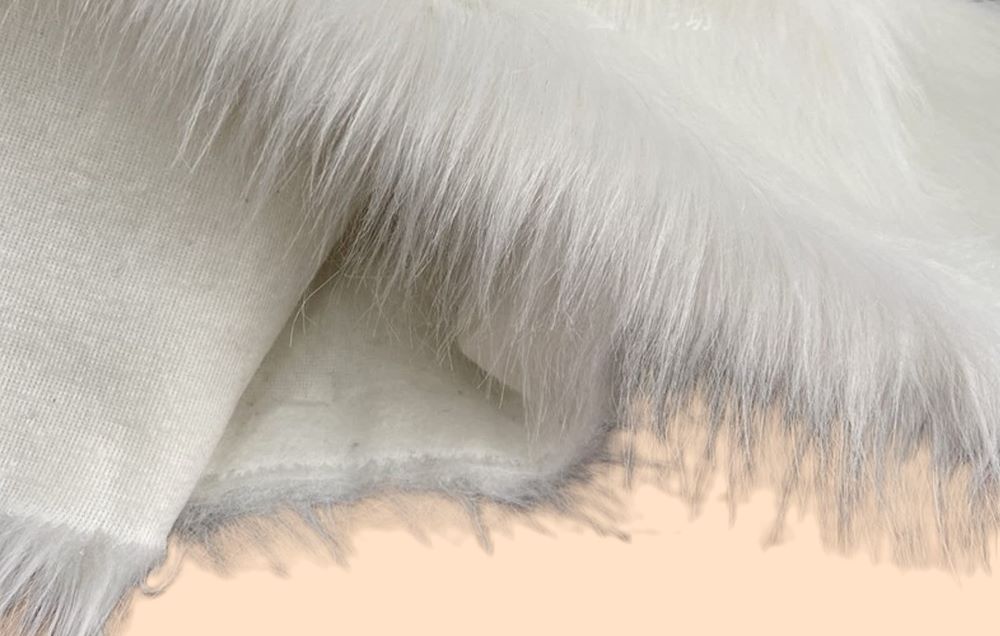
Additionally, synthetic plush is available in a wide range of colors and patterns, allowing for customization to suit any teddy bear design.
However, it’s important to note that synthetic plush may not have the same level of softness or natural appearance as other fur fabrics, which may impact the overall look and feel of your teddy bear.
Wondering how plush fabric works for more creative designs? Here’s a fun example — a quirky cyclops made entirely from synthetic plush.
Viscose
Viscose, also known as rayon, is a versatile and popular choice for teddy bear fur fabric. Made from natural fibers such as wood pulp or bamboo, viscose offers a unique combination of softness, durability, and versatility.
One of the key advantages of viscose is its silky texture, which gives teddy bears a luxurious feel that is both smooth and soft to the touch. Additionally, viscose is available in a wide range of colors and pile lengths, making it suitable for various teddy bear designs.
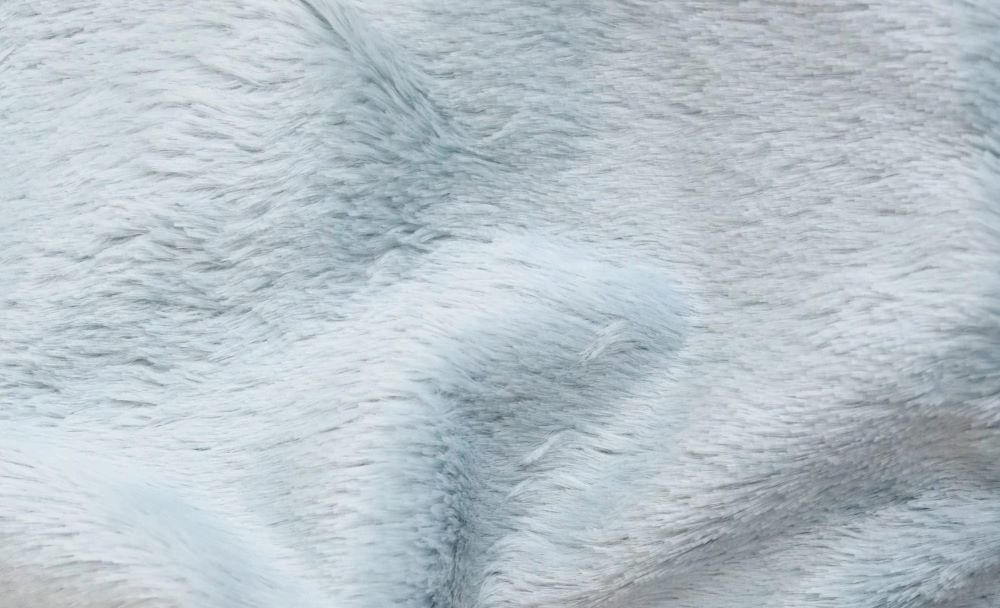
One of the reasons why viscose is a preferred choice for teddy bear makers is its versatility. Unlike some other fur fabrics, viscose can be easily dyed to achieve vibrant and long-lasting colors.
This allows for greater creative freedom when designing teddy bears, as makers can choose from a diverse palette of hues to bring their unique visions to life.
If you’re curious how viscose looks in a finished teddy-style creature, take a look at this adorable hedgehog made with Schulte viscose and hedgehog mohair.
Wool
Wool fur fabric is prized for its warmth, durability, and natural insulating properties, making it an excellent choice for teddy bears designed for colder climates or outdoor adventures.
Wool is a natural fiber derived from sheep, goats, or other animals, and is known for its resilience and ability to retain heat even when wet. This makes wool teddy bears not only soft and cuddly but also practical for keeping warm on chilly days.
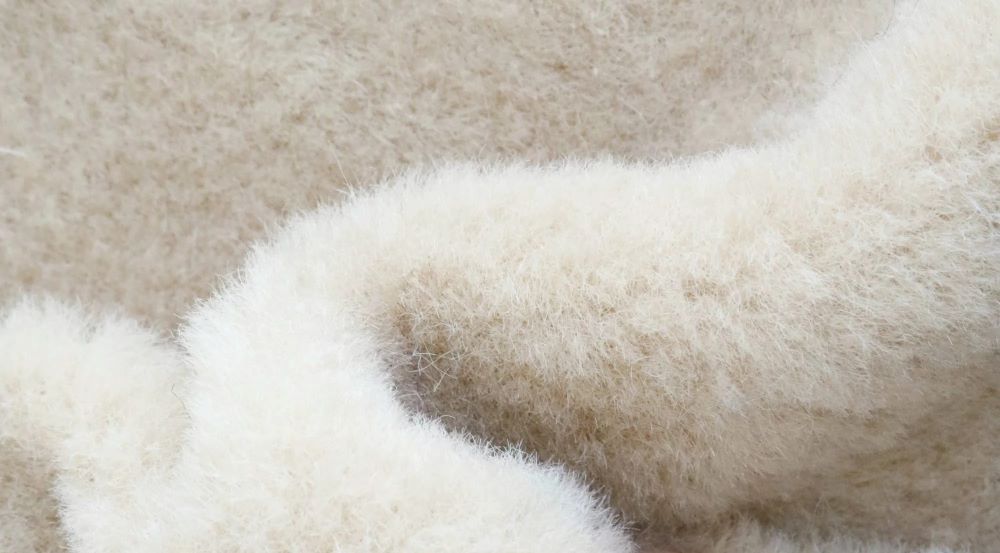
One of the key advantages of wool fur fabric is its durability. Wool fibers are naturally resilient and resistant to wear and tear, making wool teddy bears long-lasting companions that can withstand years of love and play.
Additionally, wool is naturally flame-retardant, making it a safe choice for children’s toys. While wool teddy bears may require special care, such as hand washing and air drying, their durability and warmth make them well worth the extra effort.
Cashmere
Cashmere fur fabric is renowned for its ultra-soft texture and luxurious feel, making it a sought-after choice for high-end teddy bear creations. Sourced from the cashmere goat, this premium fabric is known for its unparalleled softness and sophistication.
While cashmere fur fabric may be more expensive than other options, its superior quality and luxurious feel make it a worthwhile investment for teddy bear collectors and enthusiasts.
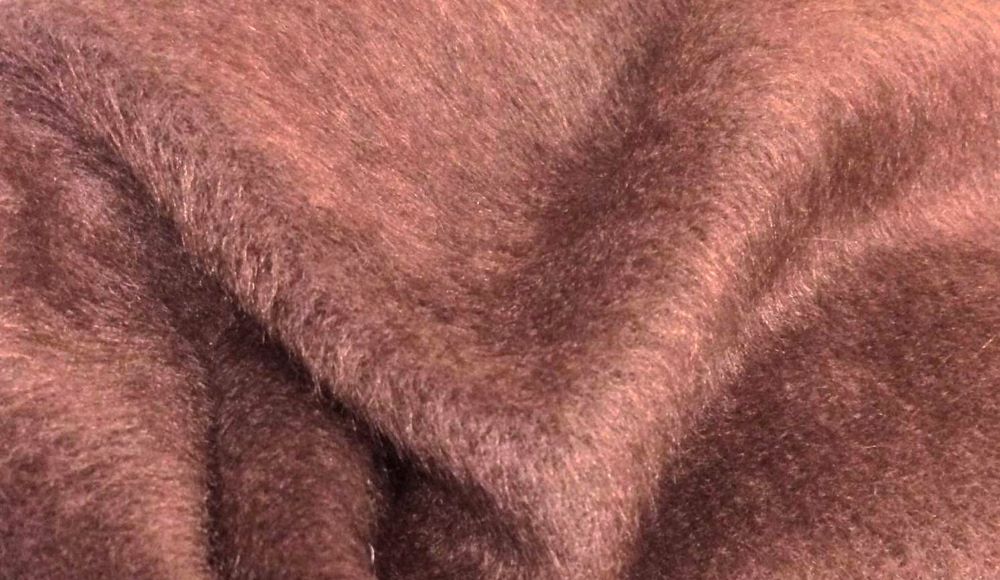
One of the key advantages of cashmere fur fabric is its exceptional softness. Cashmere fibers are finer and softer than traditional wool fibers, giving cashmere teddy bears a plush and velvety feel that is unmatched by other materials.
Additionally, cashmere fur fabric is lightweight and breathable, making it ideal for creating cuddly teddy bears that are perfect for snuggling up with.
While cashmere teddy bears may require special care to maintain their softness and shape, their luxurious feel and timeless elegance make them cherished companions for years to come.
Cotton
Cotton fur fabric is a natural choice for teddy bears, offering softness, breathability, and versatility. Made from the fibers of the cotton plant, cotton fabric is known for its soft and comfortable feel, making it ideal for creating teddy bears that are perfect for cuddling.
Additionally, cotton is highly breathable, allowing air to circulate freely through the fabric and helping to regulate body temperature.
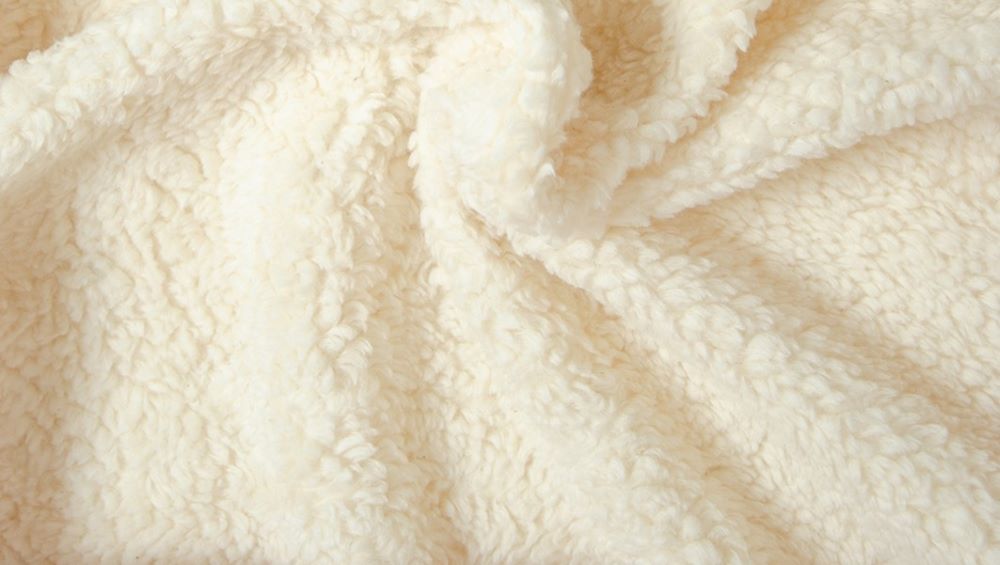
One of the key advantages of cotton fur fabric is its versatility. Cotton is available in a wide range of colors and prints, allowing teddy bear makers to create unique and personalized designs.
Whether you’re looking for a classic teddy bear with traditional brown fur or a whimsical bear with colorful, patterned fur, you can find a cotton fabric to suit your vision.
Silk
Silk fur fabric is prized for its smooth texture and elegant sheen, making it a luxurious choice for special occasion teddy bears or collector’s items. Sourced from the silkworm, silk is a natural fiber known for its softness and luster.
Silk teddy bears have a silky feel that is both smooth and luxurious to the touch, giving them a timeless elegance that is unmatched by other materials.
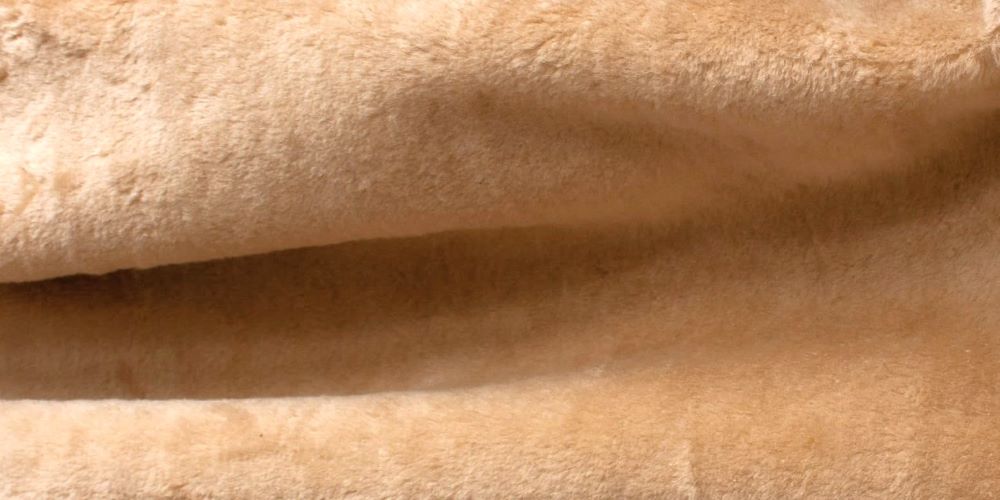
One of the key advantages of silk fur fabric is its natural sheen. Silk fibers have a natural luster that gives silk teddy bears a glossy appearance, adding a touch of sophistication to their overall look and feel.
Additionally, silk is lightweight and breathable, making it ideal for creating teddy bears that are perfect for display or special occasions.
While silk teddy bears may require special care to maintain their softness and shine, their timeless beauty and elegance make them cherished keepsakes for generations to come.
Pros and Cons of Popular Teddy Bear Fabrics
When choosing a teddy bear fur fabric, it’s essential to consider the pros and cons of each type to ensure that it aligns with your project’s requirements and preferences. Here’s an overview of the advantages and disadvantages of various fur fabrics:
Faux Fur
Pros:
- Versatility: Available in a vast array of colors, patterns, and textures, faux fur offers endless creative possibilities for teddy bear designs.
- Durability: Faux fur is often durable and easy to care for, making it suitable for teddy bears intended for everyday play.
Cons:
- Texture: While faux fur mimics the appearance of real animal fur, it may lack the luxurious feel of natural fibers like mohair or alpaca.
Mohair
Pros:
- Softness: Mohair is known for its soft and luxurious feel, adding elegance to teddy bear creations.
- Customization: Available in various colors and pile lengths, mohair offers customization options to suit different bear designs.
- Durability: Mohair is often durable and resilient, ensuring that teddy bears made from this material will stand the test of time.
Cons:
- Cost: Mohair can be more expensive than other fur fabrics, which may impact the overall cost of your teddy bear project.
Alpaca
Pros:
- Softness: Alpaca fur fabric is exceptionally soft and lightweight, providing a gentle touch that is perfect for cuddly teddy bears.
- Hypoallergenic: Alpaca fur is hypoallergenic, making it suitable for individuals with sensitive skin or allergies.
- Durability: Alpaca fur is known for its durability and resilience, ensuring that teddy bears made from this material will last for years to come.
Cons:
- Cost: Alpaca fur may be more expensive than other options due to its premium quality.
Synthetic Plush
Pros:
- Durability: Synthetic plush fabrics offer resilience and durability, making them ideal for teddy bears meant for everyday play.
- Versatility: Available in a variety of textures and colors, synthetic plush provides endless possibilities for creative expression.
- Easy Care: Synthetic plush is often machine washable, making it easy to clean and maintain.
Cons:
- Texture: Synthetic plush may not have the same level of softness or natural appearance as other fur fabrics.
Viscose
Pros:
- Softness: Viscose fur fabric offers a silky texture and luxurious feel, perfect for creating cuddly teddy bears with a gentle touch.
- Versatility: Available in a wide range of colors and pile lengths, viscose provides flexibility and customization options for teddy bear designs.
- Durability: Viscose is often durable and easy to care for.
Cons:
- Environmental Impact: While viscose is made from natural fibers, the production process may involve chemicals and have environmental implications.
Wool
Pros:
- Warmth: Wool fur fabric provides excellent insulation, making it ideal for teddy bears designed for colder climates or outdoor adventures.
- Durability: Wool is naturally resilient and resistant to wear and tear, ensuring that wool teddy bears will stand the test of time.
- Flame Retardant: Wool is naturally flame-retardant, making it a safe choice for children’s toys.
Cons:
- Special Care: Wool teddy bears may require special care, such as hand washing and air drying, to maintain their softness and shape.
Cashmere
Pros:
- Ultra-Soft Texture: Cashmere fur fabric is renowned for its luxurious feel and plush texture, adding a touch of elegance to teddy bear creations.
- Lightweight: Cashmere is lightweight and breathable, making it ideal for creating cuddly teddy bears perfect for snuggling up with.
- Durability: Despite its softness, cashmere is durable and long-lasting, ensuring that cashmere teddy bears will be cherished for years to come.
Cons:
- Cost: Cashmere fur may be more expensive than other options due to its premium quality.
Cotton
Pros:
- Softness: Cotton fur fabric is soft and comfortable, making it ideal for creating teddy bears that are perfect for cuddling.
- Breathability: Cotton is highly breathable, allowing air to circulate freely through the fabric and helping to regulate body temperature.
- Versatility: Available in a wide range of colors and prints, cotton offers customization options for teddy bear designs.
Cons:
- Texture: Cotton may not have the same level of plushness or softness as other fur fabrics.
Silk
Pros:
- Smooth Texture: Silk fur fabric is prized for its smooth and silky texture, giving silk teddy bears a luxurious feel and elegant appearance.
- Sheen: Silk has a natural sheen that adds a touch of sophistication to teddy bear creations, making them ideal for special occasions or collector’s items.
- Lightweight: Silk is lightweight and breathable, making it ideal for creating teddy bears that are perfect for display or special occasions.
Cons:
- Special Care: Silk teddy bears may require special care to maintain their softness and shine, as silk is delicate and may be prone to damage if not handled properly.
In summary, each type of teddy bear fur fabric offers its own unique advantages and considerations. By weighing the pros and cons of each option, you can make an informed decision that aligns with your project’s needs and vision.
Before you start cutting and sewing, make sure you have the right tools and supplies on hand. Our guide to the top teddy bear making supplies for beginners will help you choose the essentials for a smooth and enjoyable sewing process.
How to Choose the Best Teddy Bear Fabric for Your Handmade Project
Understanding Your Project Requirements
Before immersing yourself in the delightful world of teddy bear fur fabrics, it’s imperative to grasp the unique demands of your project.
Consider the intricacies of your envisioned creation: Is it a small, pocket-sized bear destined for comforting embraces, or a larger-than-life companion designed for whimsical adventures?
Reflect on the desired aesthetic, pondering whether your bear will exude timeless elegance or playful charm. Additionally, contemplate the intended purpose of your finished masterpiece.
Will it be a treasured keepsake for a loved one, a whimsical addition to a nursery, or perhaps a companion for a special occasion?
By discerning these key aspects, you pave the path for a fabric choice that not only embodies your creative vision but also resonates with the intended recipient.
Take the time to envision the journey your teddy bear will embark on, and let these insights guide you in selecting the fur fabric that will bring your creation to life in all its cuddly glory.
Exploring Different Fur Fabric Options
As you venture into the vast array of teddy bear fur fabrics, you’ll encounter a diverse tapestry of textures, colors, and characteristics, each offering its unique allure.
Among the myriad options, faux fur stands out as a versatile choice, renowned for its affordability and adaptability to various bear designs.
Crafters seeking unparalleled softness and a touch of luxury often turn to mohair, prized for its sumptuous feel and natural luster, evoking a sense of timeless elegance in every stitch.
For those yearning for a gentle caress, alpaca fur fabric emerges as a top contender, boasting a silky-smooth texture that beckons to be cuddled. Its delicate fibers create a sensation akin to embracing a cloud, making it an ideal choice for bears destined for comforting hugs.
Conversely, synthetic plush presents itself as a stalwart companion, offering durability and ease of maintenance without compromising on coziness. Its resilient nature ensures that your bear withstands the test of time, remaining as vibrant and plush as the day it was crafted.
Amidst this kaleidoscope of options, it’s essential to consider not only the tactile qualities but also the visual appeal of each fabric. Take note of the color palette and patterns available, ensuring that your chosen fabric complements the unique personality of your bear.
Whether you envision a whimsical bear adorned in vibrant hues or a classic design exuding timeless charm, the perfect fabric awaits, ready to bring your creative vision to life.
By exploring the diverse fur fabric options available, you open the door to a world of possibilities, each thread woven with the promise of creating a teddy bear masterpiece that will captivate hearts and inspire smiles for years to come.
Tips for Evaluating Fur Fabrics
When faced with a myriad of fur fabric options, it’s essential to employ a discerning eye and keen sense of touch to select the perfect material for your teddy bear creation. Here are some invaluable tips to help you navigate the selection process with confidence:
- Texture Matters: Run your fingers through the fabric, paying close attention to its texture. Is it velvety soft or more coarse to the touch? Consider the tactile experience you want to evoke with your bear and choose a fabric that aligns with your vision.
- Softness is Key: Gauge the softness of the fabric by gently pressing it against your skin. Opt for fabrics that offer a luxurious, plush feel, ensuring that your teddy bear is irresistibly cuddly and inviting to the touch.
- Durability Counts: Assess the durability of the fabric by examining its thickness and resilience. A sturdy fabric will withstand the rigors of playtime and retain its shape and texture over time, ensuring that your bear remains pristine for years to come.
- Drape and Movement: Observe how the fabric drapes and moves when manipulated. Does it flow gracefully or appear stiff and rigid? Choose a fabric that exhibits fluid movement, allowing your bear to move naturally and express its personality with ease.
- Color and Pattern Selection: Consider the color palette and patterns available in each fabric option. Opt for hues that complement your bear’s design and personality, ensuring a harmonious aesthetic. Additionally, explore pattern variations to add visual interest and character to your creation.
- Quality Over Quantity: While budget considerations are important, prioritize quality when selecting fur fabrics for your teddy bear. Investing in high-quality materials will result in a superior finished product that exudes craftsmanship and charm.
By following these tips and trusting your instincts, you’ll be well-equipped to evaluate fur fabrics with confidence and select the perfect material to bring your teddy bear vision to life.
Making the Final Decision
As you near the conclusion of your quest for the perfect teddy bear fur fabric, it’s time to synthesize your findings and make a decision that aligns harmoniously with your project’s vision.
Reflect on the tactile sensations and visual appeal of each fabric option, considering how they resonate with your bear’s intended personality and purpose. Additionally, weigh the practical considerations, such as durability and maintenance requirements, against your budget constraints.
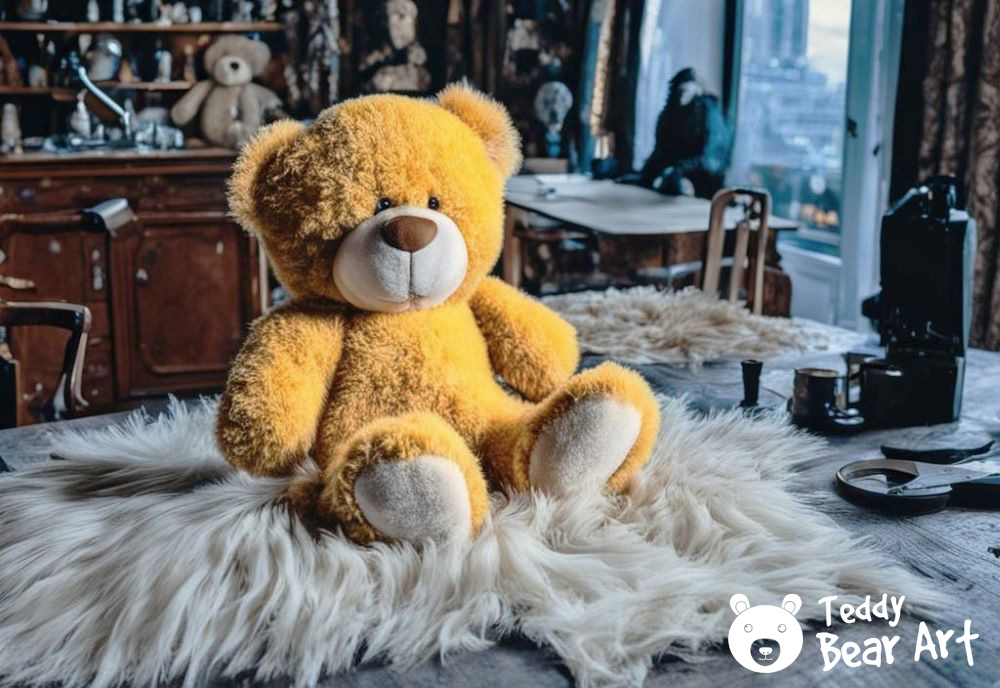
Ultimately, trust your instincts and intuition to guide you toward the fabric that encapsulates the essence of your teddy bear creation. Embrace the journey of exploration and discovery, knowing that the fabric you choose will play a pivotal role in crafting a cherished companion that brings joy and comfort to all who encounter it.
With thoughtful consideration and a touch of creativity, you’re poised to make the final decision that will transform your vision into a tangible reality.
For further guidance on choosing the perfect teddy bear fur fabric, check out this guide on teddy bear care.
Before You Go
Choosing the right teddy bear fur fabric or soft toy material takes practice, but it’s one of the most enjoyable parts of teddy bear making.
Exploring the different types of teddy bear fur fabric opens up a world of possibilities for creating one-of-a-kind bears that are as unique as they are lovable. It does not matter if you opt for the affordability of faux fur, the luxury of mohair, the softness of alpaca, or the durability of synthetic plush; choosing the right fabric is key to bringing your teddy bear vision to life.
If you ever need a hand or have any questions, feel free to leave them in the comments below, and we’ll be more than happy to help you out.
Get Free Patterns & Be the First to Know!
Want free teddy bear patterns, exclusive tutorials, and a chance to win craft supplies?
Sign up for our newsletter using the subscribe form in the middle of this article to receive new patterns, insider tips, and the latest news on teddy bear art. You’ll also automatically be entered into our annual giveaway for a chance to win teddy bear crafting materials.
Bonus entry: Save one of our pins on Pinterest to increase your chances of winning!
Let’s create, inspire, and craft beautiful teddy bears together!

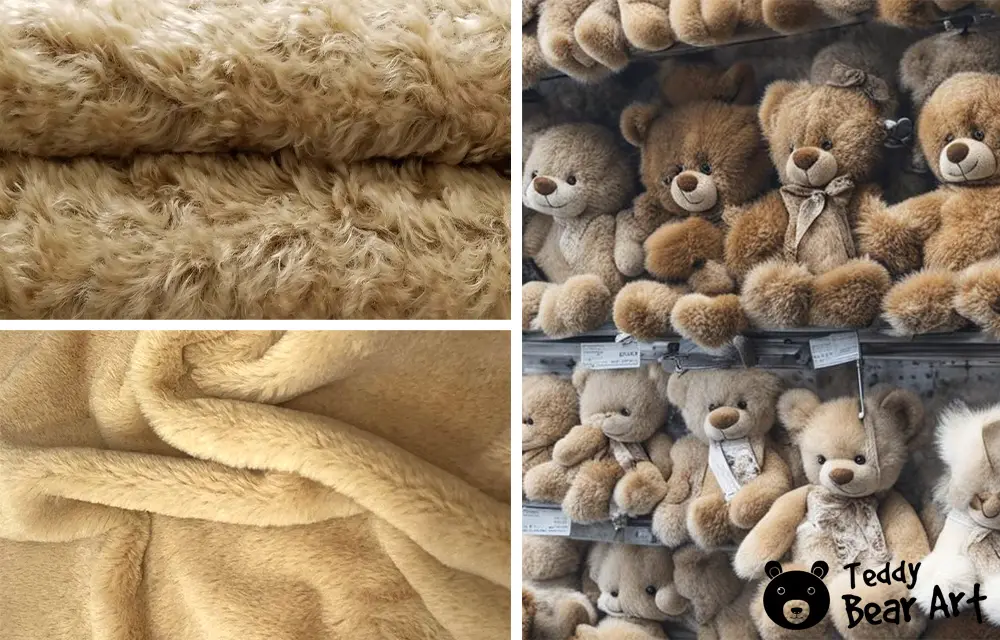
Hey Hanna,
I came across your article and found it quite intriguing. The article explores the fascinating topic of various types of fabrics used for teddy bear fur. It’s impressive how the article delves into the intricacies and diversity of teddy bear creation by discussing the different materials used for teddy bear fur. The subject is particularly captivating for teddy bear enthusiasts, collectors, craftspeople, and hobbyists, as it offers valuable insights. This topic highlights the crucial role of material selection in crafting and emphasizes how different fabrics can significantly impact teddy bears’ appearance, texture, and overall quality. The article sheds light on a niche yet creatively rich area that deserves attention.
Hey there!
Thanks a bunch for stopping by and sharing your thoughts! I’m thrilled to hear that you found the article on teddy bear fur fabrics intriguing. It’s incredible how something as seemingly simple as fabric choice can have such a big impact on the final look and feel of a teddy bear.
I totally agree with you – the world of teddy bear crafting is a fascinating one, and exploring the different materials adds a whole new dimension to the art. It’s like unlocking a treasure trove of possibilities for enthusiasts and crafters alike!
Your feedback truly highlights the beauty of this niche and how much there is to discover within it. Thanks again for your kind words, and feel free to reach out if you ever want to dive into more teddy bear adventures together! 🐻✨
What an adorable and informative guide to the world of teddy bear fur fabric! Exploring the various types of fur used in creating these cuddly companions is not only fascinating but also helpful for anyone looking to purchase or create their own teddy bear.
The breakdown of different fur fabrics, from traditional mohair to luxurious alpaca, provides valuable insight into the unique qualities and textures each material offers. It’s fantastic to see such a comprehensive overview, complete with tips on caring for and styling teddy bear fur.
One option I’d love to see explored further is the eco-friendly alternatives to traditional fur fabrics. With sustainability becoming increasingly important in today’s world, it would be interesting to learn about synthetic or recycled materials that mimic the look and feel of natural fur while being more environmentally conscious.
A relevant question that comes to mind is: “How do different fur fabrics impact the overall look and feel of a teddy bear?” Understanding how each type of fur contributes to the character and personality of a teddy bear could help enthusiasts make more informed decisions when selecting or creating their own furry friend.
Overall, this guide is a delightful resource for teddy bear enthusiasts of all ages. Whether you’re a collector, crafter, or simply someone who appreciates the comfort of a soft teddy bear, there’s something for everyone to enjoy in this comprehensive exploration of teddy bear fur fabric.
Kind Regards
matthew
Hey Matthew,
Thanks a bunch for your heartwarming feedback! 😊 It’s fantastic to hear that you found the guide on teddy bear fur fabrics both adorable and informative. Exploring the world of teddy bear fur is indeed like diving into a fluffy wonderland!
I agree with you on the importance of considering eco-friendly alternatives in today’s world. Sustainable options are worth exploring, especially for those who are conscious of the impact of their choices. I’ll keep that in mind for future content—thanks for the suggestion!
Your question about how different fur fabrics impact the overall look and feel of a teddy bear is spot on! Each type of fur brings its charm and character to the table, shaping the personality of our cuddly companions. Understanding these nuances can truly elevate the teddy bear-making experience.
I’m thrilled that you found the guide to be a delightful resource for teddy bear enthusiasts of all ages. Whether you’re a collector, crafter, or simply someone who adores the comfort of a soft teddy bear, there’s always room for more teddy bear magic!
Warm Regards,
Hanna
Hi there,
Loved your guide on the different types of teddy bear fur fabric! It’s so informative and makes the process of choosing the right fabric so much clearer. The breakdown of each type’s pros and cons is super helpful, especially for someone like me who’s just getting into teddy bear crafting. Quick question: For beginners, which fabric would you recommend starting with, considering ease of handling and cost-effectiveness?
Thanks for sharing such a detailed and helpful resource!
Dean
Hey Dean,
Thanks a bunch for your kind words! I’m thrilled to hear that you found the guide on teddy bear fur fabrics helpful. When you’re just diving into teddy bear crafting, simplicity and cost-effectiveness are definitely key factors. For beginners, I’d recommend starting with a fabric like craft fur or mohair. Craft fur is usually more budget-friendly than alpaca or mohair. Plus, it comes in a variety of colors and textures, giving you plenty of room to experiment and get creative without breaking the bank.
Happy crafting, and feel free to reach out if you have any more questions!
Warm regards,
Hanna